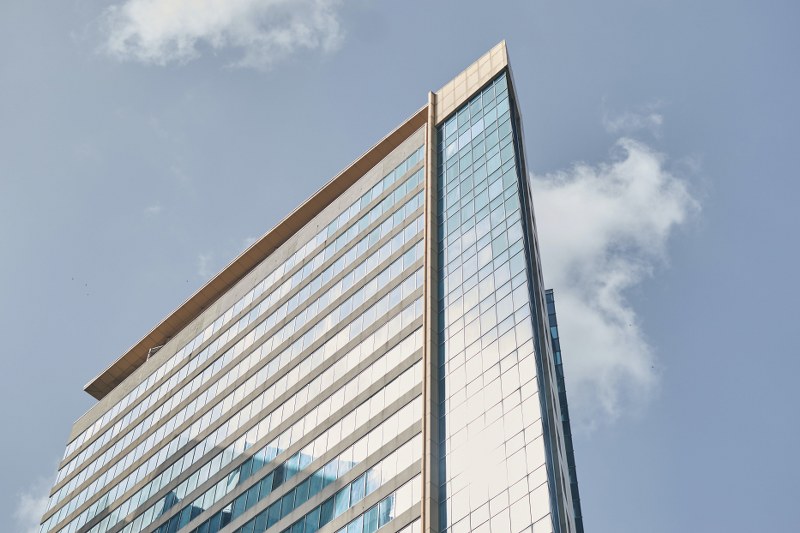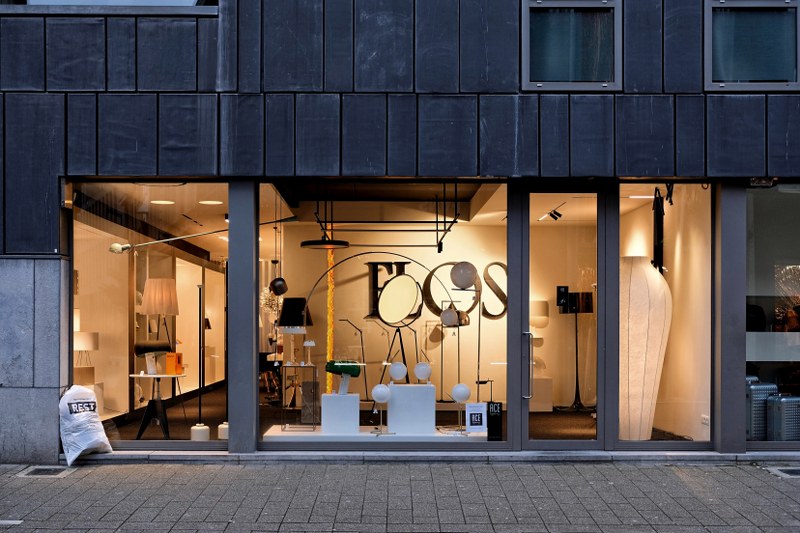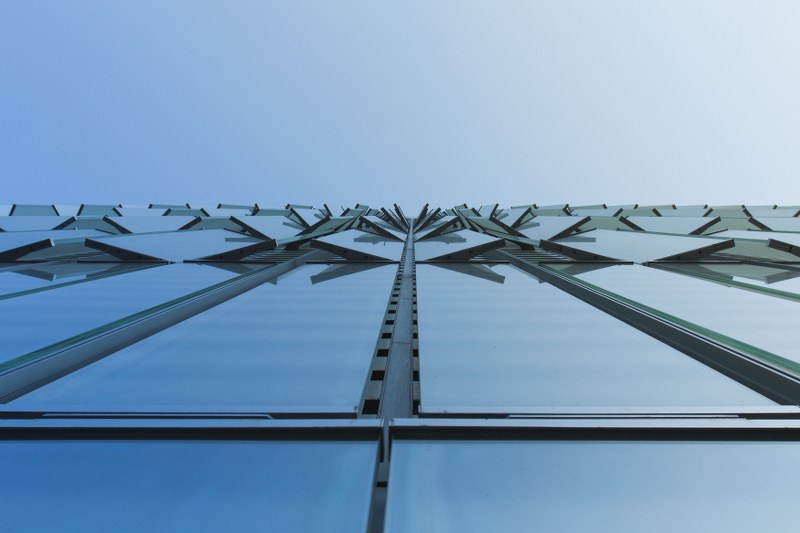Windows in buildings not only allow sunlight to enter but are also a great decorative element and often provide additional benefits.
Today, most commercial buildings use glass facades and modern architectural styles, which give the building an attractive appearance and add another great building to the city.
Windows come in many types. Some of the main ones are window wall, storefront window, and curtain wall windows. Each of these has its own unique features, mounting methods, as well as advantages and possible disadvantages when comparing the three categories with each other. However, they all have in common the fact that glass facades are one of the most popular types of window systems today, and there are plenty of reasons for this.
In addition to the wonderful appearance that a glass facade gives to a building, the wall of windows also perfectly tolerates various external factors, such as harsh weather conditions, which makes this type of facade a great solution for long-term operation without losing the building’s beautiful and presentable appearance for many years. Moreover, it makes being inside such a building safe for people since the thickness of the glass and the solid technologies that are used in the process of its creation cope even with natural disasters, providing a high level of strength and reliability.
Also, the flexibility provided by the glass facade allows architects to implement various ideas because such a window can take on any shape and thickness, so each building would have its own unique features against the rest.
In addition, the window wall also allows more daylight to pass through so that we can save on artificial light sources during the day.
Window Wall, Storefront Window, And Curtain Wall Windows: What Are The Differences
As there are several window options for facades, thus to better understand which of these types of windows for commercial buildings is best for your particular building, it is worth taking a closer look at each of the options and learning more about their features and benefits that we can get. Also, it will not be superfluous to compare each of the types of windows with each other to see in which case which option would be most suitable.
Window Wall: How It Looks, Its Pros And Cons

Generally, the window wall covers a significant part of the facade and has a large area, which ensures the unobstructed penetration of light inside.
With the large areas of glass, we can achieve maximum light penetration, which makes the window wall one of the most popular options, especially when it comes to commercial buildings.
Such a type of window wall system is installed from floor to ceiling, which also additionally provides a great view. At the same time, the window itself is fixed between concrete slabs, and the glass is mounted at the sill and ceiling.
Also, due to modern technologies which are used in the manufacturing process of such windows, we can avoid any damage to the safety or energy efficiency of the building, which is a great advantage of the window wall system.
Let’s look at some of the major benefits we can get from using a window wall for building glazing.
Window Walls: What Pros There Are
Due to its features, window walls provide excellent air ventilation, are waterproof and withstand various loads, including bad weather conditions.
In addition, this type of window is an excellent solution in terms of efficiency since the window is already delivered ready-made, so the workers only have to install it, which allows the building glazing process to be carried out more quickly. After that, it’s up to the small thing: seal the window to eliminate the possibility of leakage.
Also, with its tightness, window walls provide great sound insulation, which makes this type of window a good solution for offices, as well as other buildings where the absence of urban noise is a must.
And perhaps one of the main advantages of such windows is the visual creation of more space. Since a person, in this case, is not constrained by walls, the interior of the rooms becomes more pleasant, saturated with sunlight, and spacious, making it quite comfortable to be in such a building.
Finally, window walls don’t require much maintenance, which makes things a lot easier. Due to their design, such windows can be repaired separately if necessary since each window is located in a separate section.
Window Walls: What Cons There Are
With the use of modern technologies for the manufacture and installation of window walls, this type of window has almost no major drawbacks. However, one thing to watch out for is the possible risk of leakage. Since the seals between the glass panels can dry out, it is necessary to make check from time to time to avoid unpleasant situations, as well as to make sure that the window system is safe and reliable.
Curtain Wall: How It Looks Like, Its Pros And Cons

Curtain wall windows have become a popular option for commercial buildings with the growing prevalence of large glass panels. This coincided with the increasing use of aluminum as a building material, which is distinguished by its resistance and lightness.
Such a window wall system is installed on the outer facade of the building and is thin glass mounted in an aluminum frame. Most often, such a window is attached to the columns of the building.
One of the main advantages of such windows, in addition to the aesthetic appearance and maximum penetration of sunlight inside, is great resistance to various weather conditions, which also include strong wind gusts and even seismic activity. In this case, curtain wall windows additionally make the building safer, protecting it from swaying.
This type of window system is distinguished by its tightness, thus providing excellent water and air resistance.
There are two main types of curtain wall systems, which differ in their method of manufacture and installation. These are:
Stick
Such window systems are connected by pieces and are thin panels of glass that are attached to the wall frame.
Modular
Unlike the first one, modular is a system that already includes large blocks that come in finished form and then is installed on the building.
Curtain Wall: What Pros There Are
Due to its features, the curtain wall provides maximum sunlight, which makes the stay inside the room comfortable for a person, and also reduces the need for artificial sources of light. Moreover, features of such windows are also additional protection in case of fires, as they help prevent the spread of fire between floors.
With the flexibility provided by curtain walls, architects can change the shape and size of these, allowing for a variety of ideas because such windows can cover an area of several floors or have a floor-to-ceiling length, providing a panoramic view inside the building.
Other benefits of curtain walls are reliable air and water protection. Since curtain wall systems have a more monolithic structure, the risk of water or air currents getting inside is significantly reduced. Also, the lightness and accessibility of materials used for curtain walls make them a pretty convenient option for building glazing.
Finally, one of the key design features of such windows is that they perfectly distribute the kinetic force. Thus, the building is significantly protected from the negative effects of seismic activity or sudden and fast gusts of wind in stormy weather.
Curtain Wall: What Cons There Are
The disadvantages of curtain walls often include the high cost of such window systems. Also, it typically takes a longer installation time, as well as higher shipping prices.
As curtain walls are installed outside the building, it may also impact the installation process, which usually depends on weather conditions.
Storefront Window: How It Looks Like, Its Pros And Cons

Due to its features, the storefront window is something like a combination of an entrance and a window, which is why we can most often find such a type of system on the ground floors or one-story buildings, but there are exceptions as well. Typically, the length of such windows does not exceed 3 meters (10 ft).
Not only aluminum is used for the frames of these windows, but reinforced steel is also a popular option, which ensures high stability and long service life.
A storefront window shows its best sides when it comes to sunlight penetration and interior lighting, as well as it has great thermal performance, which makes this type of window system a good option for ground floor glazing of a building or house.
Storefront Window: What Pros There Are
The storefront window system has several advantages that make this type of glazing so popular today.
Since the storefront window is usually installed on the first floor, rarely on the second floor, the whole process is way more accessible, as it makes all the necessary actions much more convenient on such a level, as the construction team does not need to climb to a height to install the window.
Besides that, the structure of such a window system ensures maximum insolation of the interior space since nothing blocks the sunlight since the storefront window has features of both entrance and window.
In addition, these windows are great for commercial buildings. Once installing the storefront window, the first floors of such a building become a nice option for rent.
Another benefit of a storefront window system for commercial buildings is its ability to attract possible customers, as such a window allows an unobstructed view and shows the interior by revealing what is inside. Thus, a shop or cafe can attract more attention from the street. From here, we can highlight another benefit of the storefront window, which is increased security. Since everything is easily visible, it makes it excellent protection against thieves.
Storefront Window: What Cons There Are
Where there are advantages, there are always disadvantages, and sometimes pros and cons can even be the same thing. For example, a storefront window incredibly reveals what’s inside, and in some cases, such transparency helps attract customers and prevents robberies. In others, the lack of privacy can be a disadvantage, especially concerning private houses. Curtains can easily solve this problem, but the insolation of the house, in this case, would be lower for obvious reasons.
Also, other disadvantages of storefront window systems include their less flexibility and possible installation options. Such windows can have a maximum length of up to 3 meters and, in the vast majority of cases, are suitable for ground or first floors, which must be taken into account when looking for a suitable window system.
Curtain Wall vs Window Wall: Main Differences
Both a curtain wall and window wall have some similar things. However, they also have distinctive features in their design, as well as installation methods. One of the main differences between these is that the window wall is mounted between the concrete slabs, while the curtain wall is attached to the edges of the slabs. At the same time, each of these window systems provides great insolation and is perfect for glazing buildings.
Let’s take a look at these window systems point by point and compare them to understand better the difference between the curtain wall vs window wall. It is also worth noting that, first of all, the choice of a particular window system should be based on the type and structure of the building and only then on the features of the window.
Glass
Curtain wall
Since the curtain wall is installed at the edges of the slabs, this type of window system has excellent strength, so the curtain wall can support large glass dimensions. Also, such a system is often used in conjunction with other glass surfaces, such as an entrance.
Curtain walls are non-load bearing, and slab spacing is typically up to 24 feet. At the same time, standard glass sizes are no more than ten inches.
Window wall
Just like a curtain wall, this one is non-load bearing. At the same time, such windows are a single system from floor to ceiling, which provides great noise insulation both outside and between rooms inside the building since each window wall section is divided between floors.
Window wall mainly consists of fixed glass (about 80%) and also uses dry glazing. The glass in such a system is already pre-sealed, and the distance between slabs is 15 feet or more.
Price
Curtain wall
Installing this type of window system usually costs almost twice as much as a window wall, also because special equipment is required in the process. However, a curtain wall is a more durable and less maintenance option, which pays for itself in the long run.
Window wall
Window wall allows you to save some money when glazing a building. Also, the installation process itself is much simpler. At the same time, this type of system requires maintenance, especially in places near the edges of the plates.
Installation
Curtain wall
One of the key differences is that this one is installed from the outside of the building, which can make the process longer. However, this type of system can cover several floors at once, and the window itself extends from floor to ceiling, which, in addition to its advantages in soundproofing, also gives the building a beautiful appearance. Besides, curtain walls have a more durable and integral structure due to their features.
Window wall
Unlike a curtain wall, this system is ready-made before being sent to the building, and the window itself is installed from the inside, which greatly simplifies the whole process and makes it cheaper. In addition, window walls cover the area of one floor, which also means more joints on the building facade.
Weather Conditions
Curtain wall
Since the curtain wall has greater structural integrity due to its floor-to-ceiling construction, this type of window system is more resistant to different weather conditions, whether it be rain, winds, or seismic activity.
Window wall
It has less integrity in its structure since such a system consists of many sections. At the same time, the window wall also provides good resistance to weather conditions. However, such a system requires regular maintenance of the seams.
Storefront vs Curtain Wall: Main Differences
First of all, a storefront vs curtain wall differs in the area they can cover. As such, the storefront is installed on the first or ground floors, while the curtain wall is great for glazing the entire building. In addition, the difference between storefront and curtain walls includes the possible size of the window system and the thickness of the glass.
Commonly, both of these window systems provide great insolation, a beautiful appearance, and visually increase the space of the interior. Some of the main differences between storefront vs curtain walls include:
Size And Height
Storefront
The storefront window system has its limitations in terms of size and installation space. For example, this type of window does not exceed 3 meters (10 feet), so storefront windows are usually suitable for the first floors of a building.
Curtain wall
Unlike the previous one, the length of the curtain wall can be 3 meters or more. In some cases, such a window can reach 6.5 meters (25 feet), which makes it possible to use this window system for the entire building’s glazing.
Purpose
Storefront
As already mentioned, the storefront window has its limitations, so the purpose of such a system is to glaze the first floors, in rare cases, the second or third.
Curtain wall
With no such limitation in size and height, curtain walls are a great option for taller buildings, houses, and skyscrapers.
Glass
Storefront
Due to its features, a storefront window is not designed to carry a heavy load when it comes to weight. Therefore, most often, the glass thickness of such a window system does not exceed 2 inches.
Curtain wall
Since the curtain wall has a different purpose, size, and height than the storefront, this type of window system can withstand heavy loads very well. Generally, a curtain wall’s glass thickness may range from three to eight inches, depending on the purpose and type of building this window system would be applied.
Window Wall vs Storefront: Main Differences
The main differences between the window wall vs storefront are the same as in the previous point we have considered before since both window wall and curtain wall are great options for glazing the entire building, while the storefront is typically applied for the first floor, ground floors, and low-rise buildings.
Thus the points of comparison between storefront vs curtain wall are almost the same as for window wall vs storefront. These are different purposes of the application, possible window sizes, lengths, and glass features (such as thickness, weight, etc.). Also, one of the differences is that storefronts can be front, center, or back set, while window wall systems are typically front set.
In addition, between the window wall and the storefront, there are also some common points, such as a span of fewer than 10 feet and a good level of protection from water and moisture. That being said, the window wall has more uses than the storefront.
As you can see, each of the window systems, whether this is a curtain wall, window wall, or storefront, has its own characteristics, so in different cases, both the advantages and disadvantages of each of the systems can be amplified or weakened. The key reason behind this is that in addition to the features of the window system, the type of a particular building must also be taken into account. Thus, if you want to pick the best option for glazing, attention should be paid to both the properties of the window system and the features of the building’s construction.

